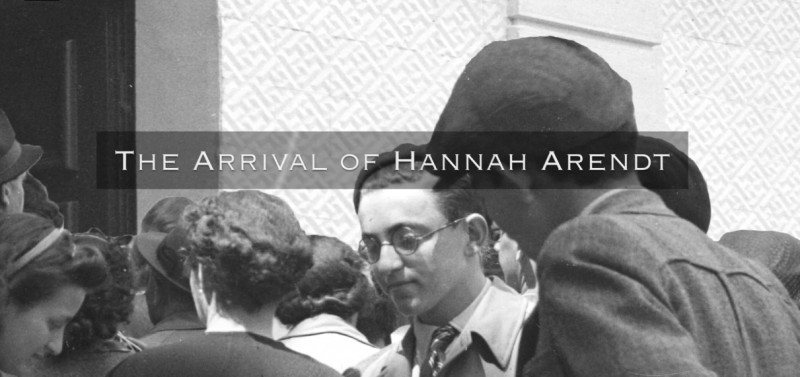
The Arrival of Hannah Arendt
This film describes the arrival of Hannah Arendt - a Jewish, German-American political theorist and publicist - in New York and her reflections on flight and helping people start over.

February 2, 1940
Lublin still Exists
Lublin still exists! I received a postcard from my father today. He’s alive, and so is my brother. He didn’t say anything about my mother, and even though I knew her fate, I was still heartbroken that there was no word about her. But Lublin is still there. The city, my home, the woods still exist. There was no word about Layzer either, and I don’t know what’s become of him. I try not to think about it. What is there to think about? I’ll probably never see him again, but I’d still like to know if he’s alive. Today, it didn’t even bother me when Marvin once again left his shoes near my bed. What do I care? The postcard arrived first thing in the morning, so I polished Marvin’s shoes. As long as there is once again a city, a sign of home, then my world still exists and someday I’ll get rid of Marvin’s shoes.
It’s Friday and my aunt made gefilte fish and baked kookees. Here, Friday night has more of the feel of Shaboos than the Sabbath day itself. Later in the evening, they play cards, but first my aunt lights the Sabbath candles. She’s worried about Selma tonight. Selma isn’t well and needs operation. She’s worried too. It seems that everyone is afraid when it comes to their own lives. And what about my mother? The postcard said nothing about her. I would have wanted to at least see her resting place and read her name on a tombstone.
The author of the novel “A Jewish Refugee in New York” Kadya Molodovsky is one of the most important Yiddish poets of the mid-20th century. She was born in 1894 in Bereza Kartuska, Russian Empire and experienced the typical trajectory of Jewish migration of the 20th century: Odessa, Kyiv, Warsaw, New York, Tel Aviv. In the course of life she worked as a teacher, editor, poet, critic, playwright and writer. When World War I broke out, she worked in a day home for Jewish children who had fled, run by her teacher in Warsaw. She continued this work in various places until 1917. Later she moved to Odessa to escape the war front and worked in a kindergarten there. In 1917, after the October Revolution, she could not return to her parents, and so remained in Kyiv, where she again took a job as a kindergarten teacher. Surviving the pogrom in Kyiv in 1920, she published her first poem.
In 1935 she moved to New York, where she published her book “In Land fun Mayn Gebayn” (“In the Land of My Bones”). In it, she addresses the internalization of exile in fragmentary poems. From this point on, her work in New York flourished.
In her work “A Jewish Refugee in New York,” Kadya Molodowsky presents the life of Rivke Zilberg, a twenty-year-old refugee from Lublin in New York, in the form of a diary. Rivke Zilberg’s experiences have a certain similarity with Molodovsky’s fate. The diary covers such topics as: Flight, loneliness, Holocaust, acculturation and more.
Kadya Molodovsky (translated by Anita Norich), 2019: A Jewish Refugee in New York. A Novel by Kadya Molodovsky. Bloomington: Indiana University Press, p. 9.